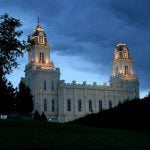
(It’s fundamentally irrelevant but it’s really beautiful, which is its own relevance. Enjoy!)
Wikimedia Commons public domain photograph
I’m drawing material here from Brent L. Top, What’s On the Other Side: What the Gospel Teaches Us about the Spirit World (Salt Lake City: Deseret Book, 2012):
Modern revelation teaches us that “the spirit of man [is] in the likeness of his person” (D&C 77:2). In 1909 the First Presidency stated that the body “is only the clothing of the spirit” and that “the spirit of man is in the form of man.” We are so familiar with this doctrine that perhaps we take it for granted. Many who are not of our faith, who encounter the spirit world, are surprised that their spirits are in the form of their physical bodies. For example, one woman who had a near-death experience stated that when her spirit left her body she was surprised to find that “I still had hands, and feet, and a body, for I had always regarded the soul as a something without shape and void. . . . [I was surprised] to find, that though I was ‘dead’ I still had form, [that] was new to me.” (6)
Dr. Top cites the Swedish scientist, philosopher, mystic, and theologian Emanuel Swedenborg (1688-1772), who claimed several visits into the next life:
People in Christendom are in such blind ignorance about angels and spirits that they believe them to be minds without form, or nothing but thoughts, which could not be conceptualized except the way one might conceptualize [a vapor] containing something living. And since they predicate of angels nothing human but thought, they believe they cannot see because they have no eyes, cannot hear because they have no ears, and cannot talk because they have no mouth or tongue. . . .
On the basis of all my experience, covering to date many years, I can say, I can insist that angels are completely people in form. They do have faces, eyes, ears, chests, arms, hands, and feet. They do see each other, hear each other, and talk with each other. In short, nothing proper to man whatever is missing, except they are not clothed with a material body. (7)
In a 9 October 1843 sermon that he delivered in Nauvoo, Illinois, at the funeral of James Adams, Joseph Smith explained that, at death,
[T]he spirits of the just are exalted to a greater and more glorious work; hence they are blessed in their departure to the world of spirits. Enveloped in flaming fire, they are not far from us. (15-16)
I like the phrase “enveloped in flaming fire.”
William Manchester published a book back in 1993 entitled A World Lit Only by Fire: The Medieval Mind and the Renaissance: Portrait of an Age. Like the Middle Ages and the Renaissance, Joseph Smith’s world was lit, to the extent that it was lit, only by fire. I suspect that his phrase “enveloped in flaming fire” was his way of describing the sheer light and glory that are often observed to surround (or even to suffuse) the spirits of the dead.












